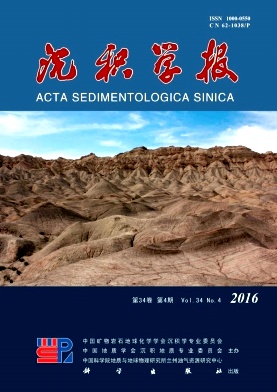Quantitative Characterization of Diagenetic Facies of Tight Sandstone Oil Reservoir by Using Logging Crossplot: A case study on Chang 7 tight sandstone oil reservoir in Huachi area, Ordos Basin
doi: 10.14027/j.cnki.cjxb.2016.04.010
- Received Date: 2015-07-13
- Rev Recd Date: 2015-08-20
- Publish Date: 2016-08-10
-
Key words:
- diagenetic facies /
- logging crossplot /
- Chang 7 oil layer /
- tight sandstone oil reservoir /
- Huachi area
Abstract: Huachi area is located in the southwest of Shanbei slope of Ordos Basin in China, with a flat strata and simple structure. Yanchang Formation of the Upper Triassic is terrigenous clastic rock series of fluvial facies and lacustrine facies, formed in the process of continuous depression and stable settlement in Ordos Basin, and vertically divided into 10 oil layers. During the deposition of Chang 7 member, the basin was in the maximum lake flooding period, developing sandy debris flow and turbidite fans in the center and on the slope. Having experienced long diagenetic evolution, Chang 7 member formed current reservoir characteristics. Diagenetic facies is the material reflection of diagenetic environment, and the combination of diagenesis and diagenetic minerals, and it is also the production of diagenesis and evolution stages in specific sedimentary, physical and chemical environment. Diagenetic facies includes the characteristics of rock particles, cement, fabric and cracks-holes, which highly generalizes diagenesis, diagenetic minerals, diagenetic environment, diagenetic events, and diagenetic evolutionary sequence during the period between the formation of sediment and the occurrence of metamorphism. The research on cores of diagenetic facies are diagenesis and diagenetic minerals. What's more, diagenetic facies plays an important role in the formation of effective reservoir, therefore to study diagenetic facies of tight sandstone oil reservoir has a broad application prospects. In this paper, diagenesis and diagenetic minerals of Chang 7 tight sandstone oil reservoir in Huachi area of Ordos Basin are studied by using core observation, thin section examination, scanning election microscope data, cathode luminescence and physical property analysis. According to the types and intensity of diagenesis and the combination feature of diagenetic minerals, diagenetic facies in the study area is qualitatively divided into four types, including instable components dissolution facies, clay minerals filling facies, and carbonate cementation facies and tight compaction facies. Then based on the analysis of conventional logging curves, such as gamma log, density log, acoustic transit time log, compensated neutron log and resistivity log, which are sensitive to diagenetic facies, crossplots are made to further quantitatively classify the four diagenetic facies and establish logging cognition model of diagenetic facies. Take Well Cheng 96 in Huachi area, for example, the quantitative recognition and classification of diagenetic facies coincide well with thin section of sampling point, formation testing and physical property analysis in single well on the longitude, which verifies the reliability of the model. The study of quantitative logging characterization method of diagenetic facies can provide theoretical guidance and technical support for comprehensive assessment of tight sandstone oil and for prediction of favorable zones in oil-gas reservoir development.
| Citation: | RAN Ye, WANG GuiWen, LAI Jin, ZHOU ZhengLong, CUI YuFeng, DAI QuanQi, CHEN Jing, WANG ShuChen. Quantitative Characterization of Diagenetic Facies of Tight Sandstone Oil Reservoir by Using Logging Crossplot: A case study on Chang 7 tight sandstone oil reservoir in Huachi area, Ordos Basin[J]. Acta Sedimentologica Sinica, 2016, 34(4): 694-706. doi: 10.14027/j.cnki.cjxb.2016.04.010 |






 DownLoad:
DownLoad: